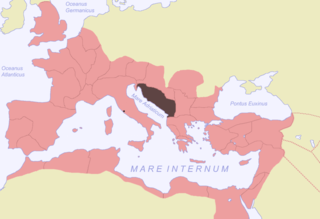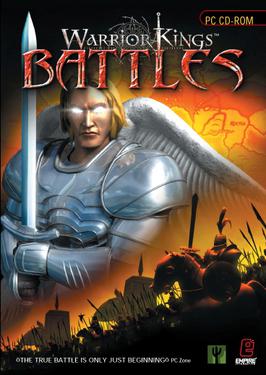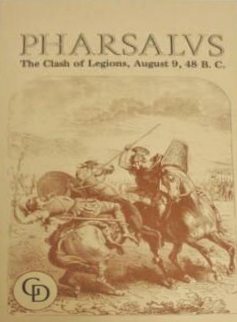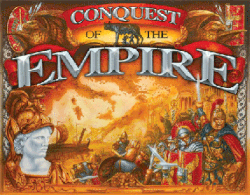
The Gallic Wars were waged between 58 and 50 BC by the Roman general Julius Caesar against the peoples of Gaul. Gallic, Germanic, and Brittonic tribes fought to defend their homelands against an aggressive Roman campaign. The Wars culminated in the decisive Battle of Alesia in 52 BC, in which a complete Roman victory resulted in the expansion of the Roman Republic over the whole of Gaul. Though the collective Gallic armies were as strong as the Roman forces, the Gallic tribes' internal divisions eased victory for Caesar. Gallic chieftain Vercingetorix's attempt to unite the Gauls under a single banner came too late. Caesar portrayed the invasion as being a preemptive and defensive action, but historians agree that he fought the wars primarily to boost his political career and to pay off his debts. Still, Gaul was of significant military importance to the Romans. Native tribes in the region, both Gallic and Germanic, had attacked Rome several times. Conquering Gaul allowed Rome to secure the natural border of the river Rhine.

Axis & Allies is a series of World War II strategy board games. The first version was initially published in 1981 and a second edition known colloquially as Axis & Allies: Classic was published in 1984. Played on a board depicting a Spring 1942 political map of Earth divided by territories, players take the role of one or more of the five major belligerents of World War II: the Axis powers of Germany and Japan; and the Allied powers of the Soviet Union, the United Kingdom, and the United States. Turns rotate among these belligerents, who control armies of playing pieces with which they attempt to capture enemy territories, with results determined by dice rolls. The object of the game is to win the war by capturing enough critical territories to gain the advantage over the enemy.

Medieval: Total War is a turn-based strategy and real-time tactics computer game developed by Creative Assembly and published by Activision. Set in the Middle Ages, it is the second game in the Total War series, following on from the 2000 title Shogun: Total War. Originally announced in August 2001, the game was released in North America on 21 August 2002 and in Europe on 30 August for Microsoft Windows.
Warlords is a video game series created by Steve Fawkner, in which role-playing elements are combined with turn-based strategy in a fantasy setting. The series began with Warlords in 1990 and includes three other games, two expansion packs, and several spinoffs.

Greyhawk Wars is a fantasy board wargame that was published by TSR, Inc. in 1991. The game was designed by David Cook as a strategic simulation of the eponymous Greyhawk Wars on the fictional world of Oerth, the World of Greyhawk campaign setting for the Dungeons & Dragons role-playing game.

Illyricum was a Roman province that existed from 27 BC to sometime during the reign of Vespasian. The province comprised Illyria/Dalmatia in the south and Pannonia in the north. Illyria included the area along the east coast of the Adriatic Sea and its inland mountains, eventually being named Dalmatia. Pannonia included the northern plains that now are a part of Serbia, Croatia and Hungary. The area roughly corresponded to part or all of the territories of today's Albania, Kosovo, Montenegro, Serbia, Bosnia and Herzegovina, Croatia, and Slovenia.

Empire Earth: The Art of Conquest is the expansion pack for the real-time strategy game Empire Earth. Art of Conquest was published by Sierra Entertainment like with the original game, but was instead developed by Mad Doc Software. It was released on September 17, 2002, in the United States. The game was released the following month in Europe and Australia, and the following year in Japan. The Gold Edition of Empire Earth, which features both the original and the expansion, was released on May 6, 2003.
Europa Barbarorum, or EB, is a modification of the PC game Rome: Total War (RTW) based on the desire to provide Rome: Total War players with a more historically accurate game experience.
Empire of The Rising Sun (RSN–1995) is a board wargame published originally by Avalon Hill, designed by Bruce Harper with much input by Dave Casper into the naval warfare rules. This is the Pacific War companion game to Advanced Third Reich (A3R), using similar rules, and containing once again a copy of Ultra magazine with a synopsis of the game. A previous version, occasionally discussed in the pages of The General magazine, had been in development the late 1970s, but was never published.

Dune is a strategy board game set in Frank Herbert's Dune universe, published by Avalon Hill in 1979. The game was designed by Bill Eberle, Jack Kittredge and Peter Olotka. After many years out of print, the game was reissued by Gale Force Nine in 2019 in advance of the 2021 Dune film adaptation.
StarCraft: The Board Game, published by Fantasy Flight Games, is a game inspired by the 1998 computer game StarCraft. Players take control of the three distinctive races featured in the video games, the Terrans, the Protoss, or the Zerg, to engage in battle across multiple worlds in order to achieve victory. Each of the three races features a fairly different playing style. A prototype of the game was shown in BlizzCon 2007, with pre-release copies sold at Gen Con 2007 and Penny Arcade Expo 2007. It was publicly released in October 2007.

Warhammer 40,000: Dawn of War – Dark Crusade is the second expansion to the real-time strategy video game Warhammer 40,000: Dawn of War developed by Relic Entertainment and published by THQ. Based on Games Workshop's tabletop wargame, Warhammer 40,000, Dark Crusade was released on October 9, 2006. The expansion features two new races, the Tau Empire and the Necrons. Including the Imperial Guard from Dawn of War's first expansion pack Winter Assault, a total of seven playable races in this expansion.

Warrior Kings: Battles is a real-time strategy video game developed by British studio Black Cactus and published by Empire Interactive in Europe and co-published with Strategy First in North America. It is a sequel to the 2002 game Warrior Kings and was released March 21, 2003 in Europe and September 30, 2003 in North America.
Sid Meier's Civilization: The Boardgame is a 2002 board game created by Glenn Drover based on the Civilization series of video games, in particular, Civilization III. Drover himself was a sales manager at Microprose during the original development of Civilization, though he was not directly involved in the creation of the video game.

Total War: Shogun 2 is a strategy video game developed by Creative Assembly and published by Sega in 2011. It is the seventh mainline entry in the Total War series and returns to the setting of the first Total War game, Shogun: Total War, after a series of games set mainly in Europe and the Middle East.
Roman infantry tactics are the theoretical and historical deployment, formation, and manoeuvres of the Roman infantry from the start of the Roman Republic to the fall of the Western Roman Empire. The focus below is primarily on Roman tactics: the "how" of their approach to battle, and how it stacked up against a variety of opponents over time. It does not attempt detailed coverage of things like army structure or equipment. Various battles are summarized to illustrate Roman methods with links to detailed articles on individual encounters.

Total War: Rome II is a strategy video game developed by Creative Assembly and published by Sega. It was released on 3 September 2013, for Microsoft Windows as the eighth standalone game in the Total War series of video games and the successor to the 2004 game Rome: Total War.
Demonlord is a two-player board game published in 1981 by Dwarfstar Games, a division of Heritage Models.

Caesar's Legions is a board wargame published by Avalon Hill in 1975 that simulates various Roman campaigns in Gaul and Germany.

Pharsalus: The Clash of Legions, August 9, 48 B.C. is a board wargame published by Game Designers' Workshop (GDW) in 1977 that simulates the Battle of Pharsalus, which decided who would rule the Roman Empire, Pompey or Julius Caesar.














